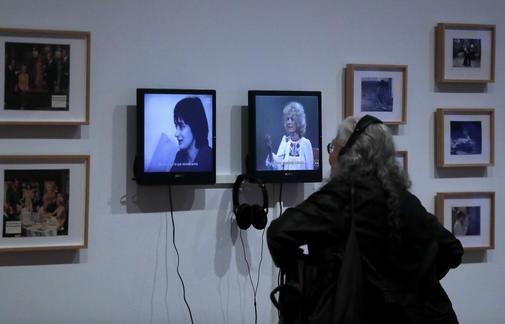Last year in Marienbad , directed in 1961 by Alain Resnais on a screenplay by Alain Robbe-Grillet, Delphine Seyrig played A, an enigmatic woman, as beautiful as fragile and distant, co-star of a film of enormous intellectual sophistication that explores the Labyrinths of consciousness, desire and memory through an unconventional narrativity.
With this film Seyrig became a kind of fetish actress in the cinematographic context of the Nouvelle Vague . Her professional experience in a patriarchal system, surrounded by male chauvinists and condemned to perpetuate oppressive female stereotypes, can be considered the trigger for intense feminist audiovisual activism. The exhibition that now comes to the Reina Sofía Museum, Musas insumisas. Delphine Seyrig and feminist video collectives in France in the 70s and 80s , curated by Nataa Petrein-Bachelez and Giovanna Zapperi, presents a tour of Seyrig's trajectory around which pivots a complex story that intertwines the horizons of emancipation and the political force of the militant video.
Fifteen years after Marienbad's success, Seyrig filmed 24 actresses who agreed to tell their experiences in the film industry to the camera . In Sois belle et tais-toi! ( Calladita you are prettier , 1976), a relaxed and spontaneous Jane Fonda talks about the first moments of her career and the physical transformations she had to assume to satisfy the image of a stereotyped and unreal femininity, with which little could she decide An inexperienced young woman in a world of men. The bodies of actresses, simple objects of desire, beauty models for millions of women around the world, were reduced to one more product of an industry against which Seyrig was revealed. The territory of representation, in which the most tyrannical and penetrating imaginary are built, was becoming a battlefield in which to fight them.
In that fight, it wasn't just about unveiling structural inequality. The objective was to regain power over representation , to provide a tool with which to produce an emancipatory visuality and intervene in a boiling public sphere. And, in that, the video emerged from the late 1960s as an accessible, popular technology, lacking an artistic tradition that conditioned its uses in the present.
With these means and objectives, in the mid-70s, Seyrig founded, together with the director Carole Roussopoulos and the translator Ioana Wieder, the Les Insoumuses collective, which participated in a very active way in countless meetings, rallies and demonstrations, just when feminism managed to place on the political agenda debates that are still open, such as sexual freedom and work or abortion. The video was the ideal means with which to experience different ways of making these and other problems visible, empowering new political subjects and establishing a non-hierarchical relationship - more horizontal, never paternalistic - with groups that had been invisible and deprived of capacity for action. Not only women. Les Insoumuses, participating in a kind of transversal internationalism, also produced videos on political violence in Latin America, the Vietnam War, the struggles for civil rights in the United States or racism in France.
The materials - more than eight hours of videos - that can now be seen in Reina Sofia along with photographs and other documents were not produced for artistic spaces, museums or galleries. Rather, they circulated in activist fields where they made sense as binders of struggles, weapons of awareness and counter-information means. One aspect, by the way, of reception, which the exhibition overlooks. Soon, however, the need arose to archive them so that to their present critical potential a documentary value was added as a source for History.
Many of these videos are preserved today at the Center Audiovisuel Simone de Beauvoir in Paris, which Roussopoulos, Wieder and Seyrig founded in 1982 to study, disseminate and promote the production of audiovisuals related to the feminist movement. That is to say, the center was not only an archive and video library, but also a creation platform from which to continue the work undertaken in the 70s, connect several generations in struggle against patriarchy and generate, with it, a necessary awareness historical - where we come from, what remains to be done - something to which this exhibition, almost three decades after Seyrig's death, contributes in a remarkable way.
According to the criteria of The Trust Project
Know more- culture
- Art
- Feminism
- Photography
- movie theater
- France
The Paper SphereFrancisco Ontañón, look at the 'other' Spain
PHOTOGRAPHER Robert Frank, the best 'spy' in America, at 94
ArtThey find a picture of Italian Cimabue in the kitchen of an old woman in France

